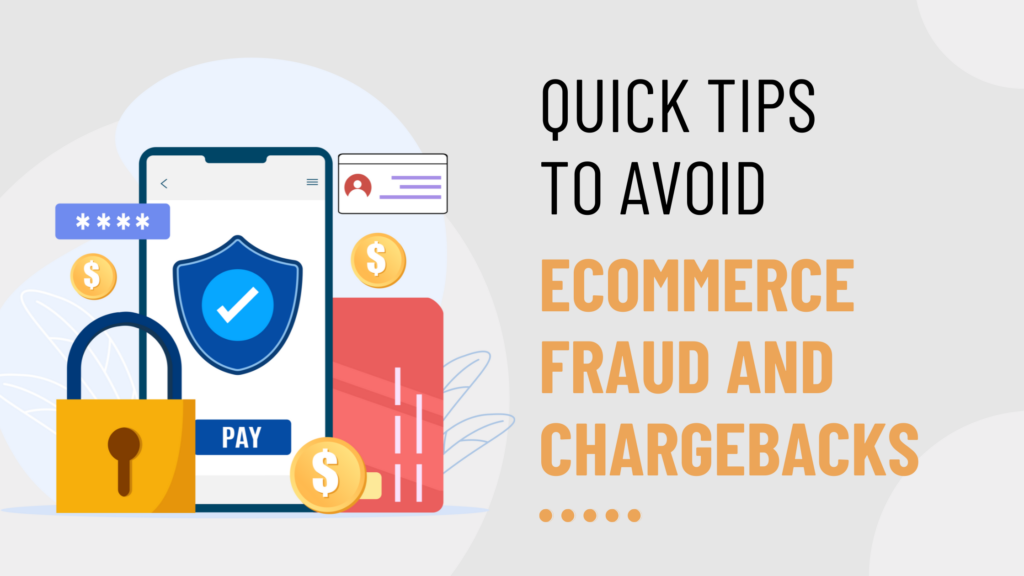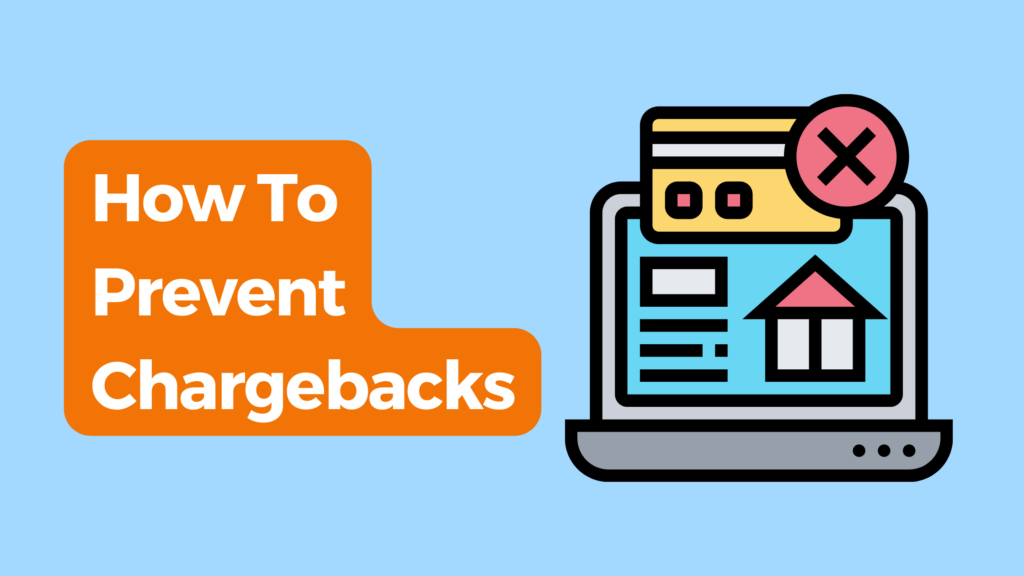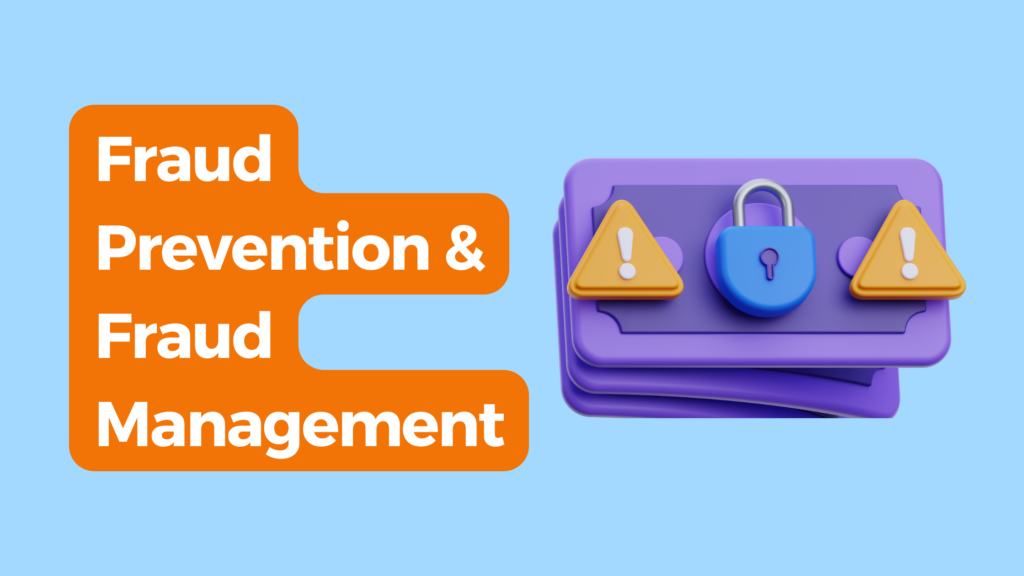Quick Tips to Avoid eCommerce Fraud And Chargebacks
Most sales will go smoothly. The customer orders your product, it’s authorized by their card company, and you collect the payment through your merchant account and have the item shipped by your distributor to your customer.
However, once in a while, the customer may file a dispute while trying to have their card company reverse the charges.
Why Do Disputes Occur?
A buyer may file a dispute for one of three reasons:
- Item not received: The buyer claims they ordered and paid for an item but did not get it.
- Item significantly not as described: In this type of claim, the buyer says the item they received is significantly different than they expected, based on the seller’s description. For example, maybe the buyer ordered a red sweater but received a blue one instead.
- Unauthorized transactions: A buyer claims that a purchase was made without his/her knowledge or consent
When these things happen, buyers may take action by opening a dispute and asking their credit card issuer to reverse the charge. This is what credit card companies call a chargeback. Their card company will contact your merchant account provider and usually ask you to clarify the details of the dispute.
What is Chargeback and How To Prevent Chargebacks?
The meaning of chargeback can be explained as a dispute initiated by a customer with their credit card issuer or bank against a charge from a merchant. When a customer believes that a transaction on their credit card statement is unauthorized, fraudulent, or not as described, they can request a chargeback. Chargebacks are designed to protect consumers, providing a mechanism to reverse a transaction and recover funds.
However, they can pose challenges for merchants, leading to financial losses, increased fees, and potential damage to their reputation. Merchants are typically required to respond to chargeback claims by providing evidence that the transaction was legitimate and the product or service was delivered as promised.
There are several things you can do to help prevent disputes and chargebacks from happening in the first place. Below are the industry’s best practices to prevent and handle disputes as they occur.
Provide Contact Information & Be Responsive
Buyers may not resort to a dispute or chargeback if they can talk to you about the issue first. Provide an email address or phone number, or even call buyers in advance when you’re selling higher-priced items.
Suggest Dispute Resolution
If a customer tells you that they intend to file a chargeback with their credit card company, try to resolve the issue first. Some processors like PayPal offer a resolution center where buyers can open a dispute.
Provide a Clear Return Policy
Make sure your return and refund policies are easy to find and understand on your website. If customers claim they couldn’t find the return policy, it can be to your disadvantage, not theirs.
However, sometimes despite your best efforts a chargeback will still be filed, so below are some thoughts on your best approach forward:
Prevent “Item Not Received” Claims
Here are some tips to help prevent or minimize losses when your customer doesn’t receive an item.
- Give buyers realistic delivery dates: Realistic dates can help avoid customers prematurely filing disputes.
- Ship with online tracking: Use a shipping service that provides online tracking to help confirm that the item was delivered. Standard shipping receipts only show that an item was shipped. If the total sale is over $200, obtain signature confirmation to confirm your customer received their order. The nominal expense is well worth it.
- Order shipping insurance: Too many things can go wrong in transit. That’s why it’s important to purchase shipping insurance for items that are fragile or expensive. You need to check with your supplier to see when this can be added, and you don’t need to do this for every order but if someone is purchasing a large monitor instead of a small cable, it’s worth considering.
- Delay shipping high-risk orders: Delay shipment for new orders that are expensive and in demand for 24 to 48 hours, especially when shipping internationally. Use caution when shipping overnight. Fraudsters will often ask for overnight shipping so that they can resell expensive merchandise as quickly as possible.
Prevent “Significantly Not As Described” Claims
Here are a few things you can do to help make sure that items meet the buyer’s expectations.
- Add to your descriptions: Some suppliers do not provide detailed descriptions, so besides the SEO benefit, adding custom content and more details can help prevent chargebacks as well. You might also have the UPC or other product details shown on the page where an item is ordered giving your customer additional ways to research your product.
- Give adequate disclosures: If you’re selling used items, clearly disclose any functional defects or cosmetic damage to the item(s). Inventory Source helps make sure that refurbished items have this detail included in both the description and the title. You might want to review your product file to see if your supplier has refurbished items in their catalog so you can be more familiar with these products, but when the supplier flags an item as refurbished, Inventory Source will make sure those details are captured and posted on your listing for you to help.
- Answer any questions promptly and clearly: If a buyer does contact you with an issue, being helpful and keeping the tone of communications positive may prevent a small problem from growing into a larger one.
Overall Fraud Prevention and Fraud Management
Looking at the bigger market, ecommerce fraud prevention is crucial as safeguarding your business against fraud is important. Overall fraud prevention and management strategies are crucial to maintaining a secure online environment.
- Implementing robust authentication measures, such as two-factor authentication and address verification systems, adds layers of protection.
- Regularly updating and fortifying your website’s security infrastructure, including encryption protocols, helps deter potential threats.
- Employing a comprehensive fraud management and detection system that analyzes customer behavior, transaction patterns, and flags suspicious activities in real-time is instrumental.
Furthermore, maintaining a vigilant eye on your inventory and monitoring for irregular purchase patterns aids in identifying potential fraudulent chargeback activities. Establishing clear and transparent policies for customers, including terms of service and return policies, helps manage expectations and reduces the likelihood of chargebacks stemming from misunderstandings. Regularly educating your team about emerging fraud tactics and staying informed about industry best practices ensures that your fraud prevention strategies evolve with the changing landscape.
Prevent Unauthorized Transaction Claims
Buyers may open a dispute or request a chargeback when they believe that a purchase or other transaction was made using their credit or debit card without their permission. This is often the most common reason given. Sometimes this just may be a simple mistake or misunderstanding.
This can often happen if they forgot they purchased from your website or if your merchant account and your domain name for example use different names. If your merchant account details do not match your domain, you should make this clear on your invoices and/or with the details you present on your website.
In most cases, the easiest way to settle a dispute is to work with your customer to figure out what happened. It’s a chance for you to provide great customer service, prevent a possible escalation, and turn them into a repeat customer.





